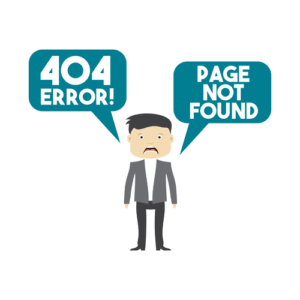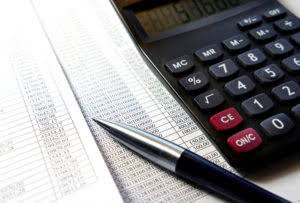
When an asset is sold for more than its Net Book Value, we have a gain on the sale of the asset. We are receiving more than the truck’s value is on our Balance Sheet. The fair market value QuickBooks of pp&e is typically determined by an independent appraisal. This appraisal will take into account a number of factors, including the age and condition of the asset, its current use, and the current market for similar assets. However, care must be exercised when using a trade-in allowance to measure a gain or loss on this type of transaction.

Dispose and delete options for fixed assets

That said, knowing the differences between the two concepts can help eliminate any confusion. For that, they must multiply the asset’s value at the start of the financial year or any particular duration by the depreciation rate. If the asset is traded in, sold on credit, or destroyed (and an insurance claim is made), the account of the supplier of the new machine, the debtor, or the insurance company is debited.
Step 3 of 3
A gain from the sale of an asset will increase net income, potentially boosting earnings per share (EPS) and making the company appear more profitable. Conversely, a loss will decrease net income, which might raise concerns among stakeholders about the company’s asset management practices. This gain or loss is typically reported under non-operating income, distinguishing it from the core business operations and providing a clearer picture of operational performance. The disposal of an asset has a multifaceted impact on a company’s financial statements, influencing both the balance sheet and the income statement. When an asset is removed from the balance sheet, it directly affects the total assets figure, which can alter key financial ratios such as the return on assets (ROA) and the asset turnover ratio.
- This generally happens when the asset is fully depreciated and is no longer in use, or when it’s deemed irreparable or obsolete.
- To record the transaction, debit Accumulated Depreciation for its $28,000 credit balance and credit Truck for its $35,000 debit balance.
- This process not only reflects operational decisions but also has implications for a company’s financial health and strategic planning.
- In many cases, plant assets are sold rather than disposed of for no value in return.
- Depreciable assets such as automobiles, computers, and photocopy machines are often traded in for new assets of a similar kind.
- QuickBooks Online Advanced automates how you manage and track your fixed assets, calculate book depreciation, and generate reports.
- This could include cash received or the fair market value of any non-cash consideration.
What are some examples of operating assets that are not sold?
QuickBooks uses the purchase date, useful life, and depreciation method to calculate the accumulated depreciation amount. It uses the mid-month convention for both the year when a fixed asset is acquired and the year when the asset is disposed of. In addition, the journal entry below would be made to record the disposal (note that the amount of accumulated depreciation is the sum of $52,500 and $10,500). To measure the gain or loss and operating income, the book value should be adjusted by the partial year’s depreciation expense prior to recording the disposal. The equipment will be disposed of (discarded, sold, or traded in) on 10/1 in the fourth year, which is nine months after the last annual adjusting entry was journalized.
Disposal of Property, Plant or Equipment
The proceeds from the sale of an asset are recorded under investing activities, reflecting the cash inflow from the transaction. This can improve the company’s liquidity position, providing additional funds for reinvestment or debt repayment. However, if the asset disposal is part of a broader strategy to liquidate assets for how to record disposal of asset cash, it might signal underlying financial distress, warranting closer examination by stakeholders.

Both account balances above must be set to zero to reflect the fact that the company no longer owns the truck. A loss results from the disposal of a fixed asset if the cash or trade-in allowance received is less than the book value of the asset. The company also experiences a loss if a fixed asset that still has a book value is discarded and nothing is received in return. The assets of the company must be reduced by the amount of the fixed asset that has been sold.
- To illustrate the journal entries, let’s assume that we have a fixed asset with an original cost of $50,000 and accumulated depreciation of $30,000 as of the beginning of the year.
- This reflects the liquidation of a long-term asset and its conversion into cash or cash equivalents.
- The organization compiled an accumulated depreciation of $10,000 on that asset.
- They need to record the cash received and depreciation as asset debit.
- Its cost can be covered by several forms of payment combined, such as a trade-in allowance + cash + a note payable.
This generally happens when the asset is fully depreciated and is no longer in use, or when it’s deemed irreparable or obsolete. Ask a question about your financial situation providing as much detail as possible. Our goal is to deliver the most understandable and comprehensive explanations of financial topics using simple writing complemented by helpful graphics and animation videos. It is generally not considered advisable to provide any depreciation for the year of disposal.
How does depreciation on property differ from depreciation on other types of assets?
Yet, not all assets are suitable for donation, and it’s important to ensure the receiving organization is legitimate. 👉 It generates revenue from the sale, which can then law firm chart of accounts be reinvested in the business. Conversely, an object can lose a large part of its market value when it is used, without modifying the linear principle of depreciation. Depreciation is calculated taking into account the expected duration of use of the asset.
What is the financial impact?
If, on the other hand, the disposal of fixed assets account shows a credit balance, this denotes a gain or profit on the sale of the fixed asset. The calculation of gain or loss on the disposal of an asset is a straightforward process that hinges on the comparison between the asset’s net book value and the proceeds from disposal. The net book value is ascertained by subtracting the accumulated depreciation from the asset’s historical cost. This figure represents the asset’s carrying amount on the balance sheet up to the point of disposal.
